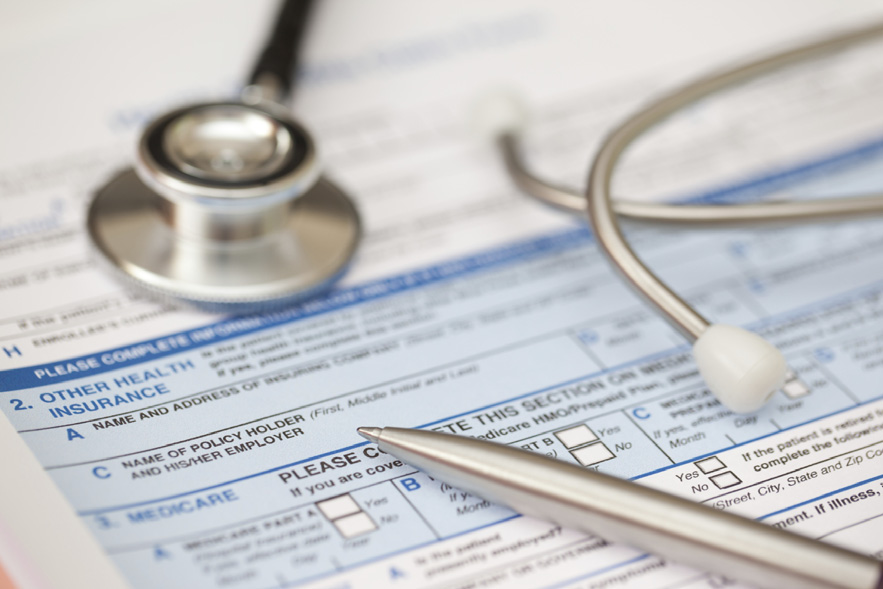Below is a summary of some of the key tax and lending provisions of interest to individuals and businesses in the CARES Act, which was signed into law today, March 27, 2020 by the President. It had overwhelming bipartisan support in the Senate and in the House.
Download Our Guide: CARES Act at a Glance
Business Tax Provisions
- Employee retention credit for employers subject to closure due to COVID-19. Refundable payroll tax credit for 50% of qualified wages paid from March 13, 2020 through December 31, 2020 for employers whose (i) operations were fully or partially suspended due to a COVID-19 related shut-down order, or (ii) gross receipts declined by more than 50% when compared to the same quarter in the prior year. The amount of qualified wages depends on whether the employer has more than 100 FTEs; the amount is larger for employers with 100 or fewer employees. The credit is capped at the first $10K of compensation (including health benefits) paid to employees, and no credit can be claimed if a covered loan is obtained under the PPP, i.e., the forgiveable-loan program described below. (§2301)
- Employer payroll tax holiday. Employers and self-employed individuals can defer payment of the employer’s share (6.2%) of the Social Security payroll tax, but the deferred amount must be repaid in equal installments by December 31, 2021 and December 31, 2022. This benefit is not available if any debt is forgiven under the PPP. (§2302)
- Net operating losses. The Act allows for NOLs arising in tax years 2018, 2019, or 2020 to be carried back 5 years, which is favorable because it allows carrybacks to 2017 and earlier when the top corporate tax rate was 35%. The carrybacks cannot be applied against the 2017 one-time repatriation tax on offshore income. It also removes the 80% of taxable income limitation, retroactively, so that NOLs can fully offset taxable income in 2018, 2019, and 2020, regardless of the year in which they arose; however, in 2021, the 80% rule goes back into effect, including for tax years 2018 through 2020. (§2303) The Act does not change the rules for capital losses, which can be carried back 3 years and forward 5 years.
- Modification of §461(l) excess business loss rules. The provision modifies various aspects of the excess business loss (EBL) limitation applicable to pass-through businesses and sole proprietors, so they can utilize losses sooner. Specifically, it repeals the EBL limitation for tax years 2018 through 2020. (§2304)
- Refunds for AMT credits. Since the repeal of the corporate AMT, carryover AMT credits currently are refundable over several years, with the balance fully refundable in 2021. This provision accelerates the recovery time, enabling C corporation to obtain a refund of 50% in 2018 and the balance in 2019, unless the taxpayer elects to claim the entire refundable credit in 2018. This is also helpful for a corporation that lost its AMT credits because it went out of business; now it can file for a quick refund to claim all of the credits in 2018 or 2019. (§2305)
- Temporary modification of §163(j) interest deduction limitation. This provision increases taxpayer’s permitted interest deduction by increasing the 30%-of-ATI limitation to 50% (with adjustments) for 2019 and 2020 (with special rules for partnerships 2019). Also, taxpayers elect to use their 2019 ATI in the 2020 tax year, which will increase their limitation assuming there is less taxable income in 2020. (§2306)
- Technical amendment regarding qualified improvement property. Qualified improvement property (QIP) is any improvement to the interior of a non-residential building after the building was placed in service, other than elevators, escalators, building enlargements or changes to the building’s internal structural framework. It has a recovery period of 15 years for general depreciation, and is eligible for bonus depreciation. If the alternative depreciation system (ADS) is used, because the real property business elected out of §163(j), for example, then QIP has a 20-year recovery period and is not eligible for bonus depreciation. The bill would fix this retroactively so that businesses, especially in the hospitality industry, will be able to utilize bonus depreciation and write off immediately costs associated with improving facilities instead of having to depreciate them over a 39-year period. (§2307)
- Temporary exception from excise tax for alcohol used to produce hand sanitizer. The provision waives in calendar year 2020 the federal excise tax on any distilled spirits used for or contained in certain FDA-compliant hand sanitizers. (§2308)
- Individual tax credit/rebate. All US residents who are not dependents of another and have a valid Social Security number, are eligible for a $1,200 rebate ($2,400 for married couples). There is an additional rebate of $500 per child. The rebate phases out beginning at AGI of $75,000 for single taxpayers, $150,000 for married taxpayers, and $112,500 for head of household taxpayers. The reduction is $5 for each $100 of adjusted gross income (AGI) over the relevant threshold. Payments will be based on 2019 tax returns if filed, or 2018 tax returns if 2019 is not filed yet. (§2201)
- Special rules for retirement accounts. The 10% early withdrawal penalty is waived for distributions on or after January 1, 2020 for coronavirus-related purposes. The distributions will be taxed over a 3-year period and the amount can be recontributed to an eligible retirement plan during that time without regard to the contribution limits at that time. Also, loan limits from certain retirement plans are increased for coronavirus-related relief. (§2202)
- RMD rules temporarily waived. The required minimum distribution (RMD) rules for certain defined-benefit contribution plans and IRAs are waived for the 2020 calendar year. (§2203)
- Above-the-line charitable deduction. For 2020, taxpayers are entitled to a deduction of up to $300 for cash contributions to churches and charitable organizations, but only if they take the standard deduction. (§2204)
- Increased income limitation on charitable contributions. Currently, charitable deductions are limited to 50% of an individual’s AGI. This limit can be suspended for certain cash contributions made in 2020 if an election is made. For corporations making certain cash contributions in 2020, the 10% limit generally is increased to 25%. (§2205)
- Exclusion from income of employer payments of student loans. For 2020, employers may contribute up to $5,250 toward an employee’s student loan and the payment will not be taxable to the employee. The cap applies to this new student-loan repayment benefit as well as other educational assistance. (§2206)
- Small business loans. The bill provides two lending programs for small and medium-size businesses to obtain disaster relief, and allows both to be used though not for the same purpose. There is the Paycheck Protection Program (PPP), which is an expansion of the existing 7(a) program, and the Economic Injury Disaster Loan (EIDL) program.
- PPP. This is the lending program that allows for some loan forgiveness. Below are the details:
- Applies to businesses with 500 or fewer employees, and certain affiliation rules apply to combine businesses with common ownership, though they are waived hotels and restaurant franchises. The borrower must have been in operation on February 15, 2020.
- Loans will be made by banks and commercial lenders authorized to make SBA loans, and the application period ends June 30, 2020.
- The amount of the loan is limited to the lesser of (i) $10M or (ii) the borrower’s average total monthly “payroll costs” for the 1-year period ending on the date the loan is made multiplied by 2.5, plus any refinanced loan under the EIDL program obtained after June 31, 2020.
- Payroll costs generally include employee salaries and tips, retirement benefits, severance payments, state and local taxes on employee compensation, but does not include compensation paid to employees and independent contractors in excess of $100,000/year, and amounts paid to persons who reside outside the US.
- The loan proceeds may be used for payroll costs (as defined), employee benefits and commissions, interest payments on mortgages, rent, utilities, and interest on debt incurred before February 15, 2020.
- Loan terms:
- No collateral required.
- Maximum interest rate of 4%.
- Maximum term of 10 years.
- No interest or principal payments are required for a period between 6 months and 1 year (though interest will accrue from the day the loan is made).
- Prepayment penalties are prohibited.
- Borrower may apply for loan forgiveness in an amount equal to the cumulative amount of payroll costs, rent, utilities, and interest paid on mortgages during the 8 weeks after the loan is made. The amount forgiven is limited to the extent compensation and headcount are reduced relative to a base period, and any amount forgiven will not be taxable to the borrower (as it otherwise would have been).
- EIDL Program. This program currently allows for emergency loans of up to $2M to assist companies affected by COVID-19. The bill would waive the requirement for personal guarantees on loans under $200K, it would waive the requirement that the borrower not be able to obtain credit elsewhere, and provide emergency grants of up to $10K within 3 days of the borrower filing an application, though the amount of the grant would reduce any loan forgiveness under the PPP. The bill also would streamline the loan application process.
contact your Withum advisor or a member of Withum’s Tax Services Group.
Individual Tax Provisions
Funding for Small- and Medium-Size Businesses
This is a general summary of the bill. We will issue more detailed summaries of various provisions in the days and weeks to come.
Authors: Dan Mayo | [email protected], Brian Lovett | [email protected] and Sal Falzone, Jr. | [email protected]
SBA Financial Assistance Guidance and Loan Resources





